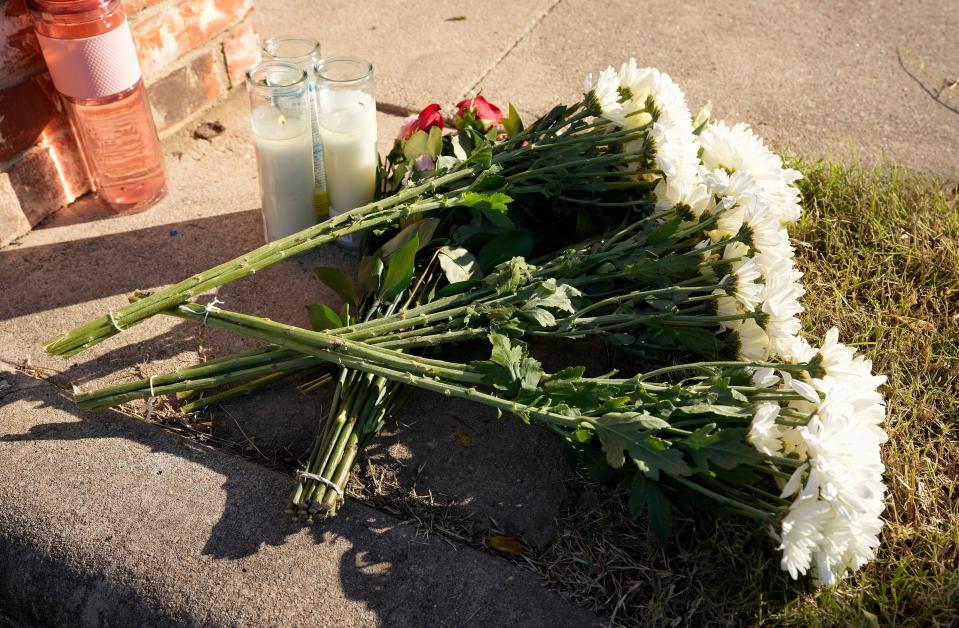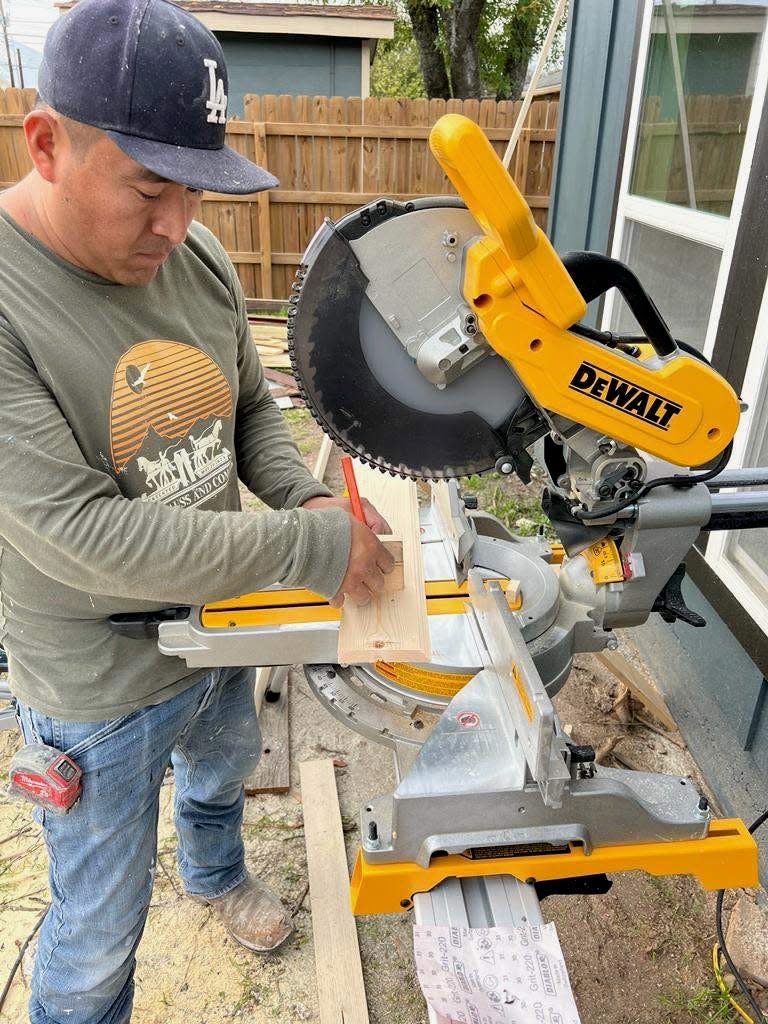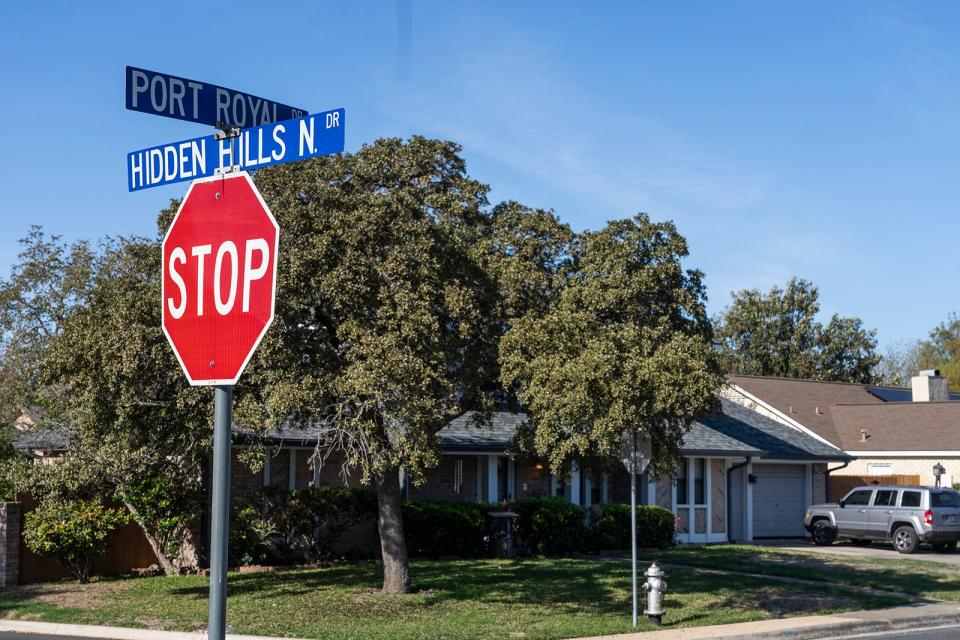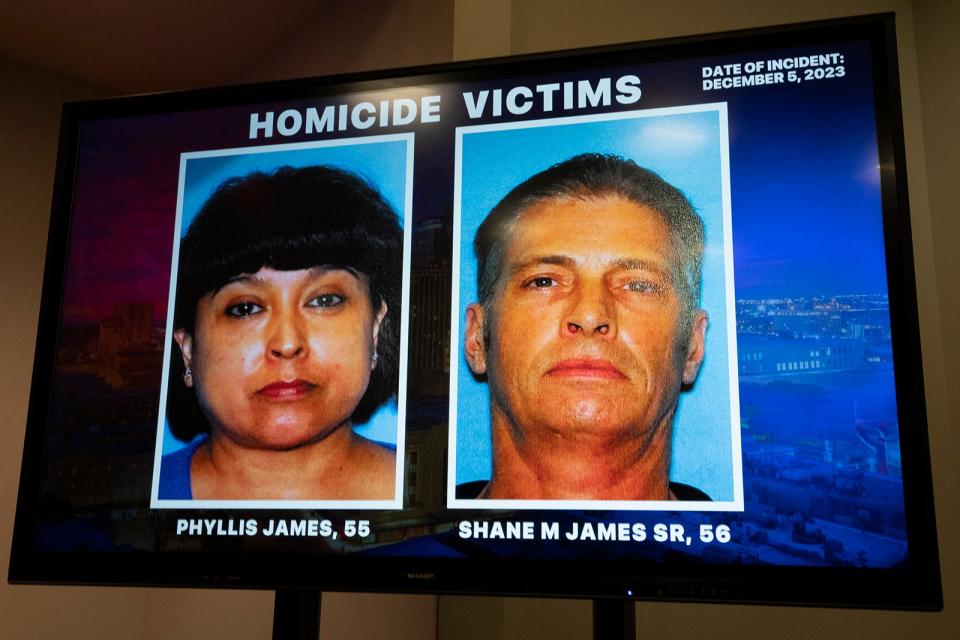Grumet: Like most mass shootings, Austin rampage had tragic roots in family violence
They were regular people doing regular things: A young woman pushing her baby in a stroller. A handyman heading out for a lunch break. A mother and daughter relaxing at home.
Apart from their lives being destroyed Tuesday by a gunman who opened fire across Austin, the only pattern seems to be the horrifying randomness of it all — that some man you’ve never met will drive 100 miles from his home to your neighborhood and decide this day is your last.
Yet there is an important thread in the mass shooting that shook Austin this week: The man accused in this rampage, 34-year-old Shane Matthew James Jr., had a history of family violence — a hauntingly common trait among mass shooters.
A landmark study of more than 100 mass shootings between 2014 and 2019 found that 68% involved some element of family or domestic violence. Either the shooter had a history of such charges, or the victims of the massacre included relatives or an intimate partner of the gunman.

Tuesday’s mass shooting appears to check both boxes. James had been arrested in January 2022 on assault charges involving his parents and a sibling, and Bexar County authorities say James killed his parents in their home just outside San Antonio before driving to Austin and shooting a series of strangers, leaving a total of six dead and three injured.
“It’s not that I’m not surprised,” said Nikhita Ved, vice president of community services at the SAFE Alliance, her voice weighted by last week’s events. “It's now that I have an expectation that I'm going to see a history of family violence with someone who commits mass shootings.”
Identifying this common thread does not mean there is an easy fix. Indeed, experts caution against focusing on a single moment in time — if only this one thing went differently — as the point when such a tragedy could have been prevented.

Family violence is complicated, emotional and often taboo, made even thornier if the aggressor is also dealing with mental health issues, as authorities have said James was.
“We also know that this man, unfortunately, was not taking his medicines, and he was drinking in the days before this,” Bexar County Sheriff Javier Salazar said in Spanish at a press conference Wednesday, though he emphasized James is still responsible for his actions.
We are only beginning to understand James’ apparent unraveling. But it’s clear that families need more options for addressing this type of violence, and law enforcement needs to take a more expansive view of the problem.
A person hurting his own family today could end up shattering other people’s families tomorrow.

Father's angst shows need for options
As Salazar described Bexar deputies responding in August to the home James shared with his parents, you could almost feel the father’s angst.
The son was barricaded in his upstairs bedroom, having a mental health crisis. His father, Shane James Sr., forced open the locked door, but it opened only a few inches, blocked by the bed. Salazar said deputies could see the son was naked, unarmed and agitated.
If they could have reached him, deputies would have arrested Shane James Jr. on warrants for the outstanding family assault charges from a year earlier. Instead, Salazar said, the deputies told the father, “Please call us back if and when he comes out of that bedroom, and we'll come right back and we'll arrest him.”
“And by all appearances,” Salazar added, “it doesn't appear like that call ever came in.”
Experts say this is heartbreakingly common in family violence situations: People want help, but not necessarily the arrest of someone they care about. So they try to manage an enormous problem on their own.

“I think that it's really important to have a range of options presented to people experiencing violence from a loved one, so they don't feel like their only option is to support the prosecution of their loved ones,” said Mikisha Hooper, the coordinated community response manager at the Texas Council on Family Violence.
That could include referrals to mental health or substance abuse programs; assistance with housing, to provide some physical separation of those involved; and information on how to apply for a restraining order instead of having someone arrested on the spot.
If the aggressor wants to address their abusive behavior, they could be referred to a Batterers Intervention and Prevention Program — an effective program that people typically attend at the end of a criminal justice process, as a condition of probation, Hooper said. But there’s no reason that program couldn’t be offered up front as an alternative to arrest.
Ved, at SAFE, agreed that families need all those options, as well as the choice to press criminal charges, so they can pick what makes sense for them.
“But what we do know is that every single one of these spokes on the wheel is really underfunded,” Ved said. “They need to be operating at full capacity to really get ahead of it, to be preventative rather than responsive.”
Our systems miss the full picture
Even after a person is arrested on a family violence charge, the criminal justice system tends to view the matter in isolation.
Speaking at the news conference last week alongside Salazar, Bexar County District Attorney Joe Gonzales told reporters “there was no indication” of violence before Shane James Jr.’s arrest in January 2022 on three misdemeanor assault charges for allegedly pushing and scratching his parents and a sibling.
But really, Gonzales’ remarks illustrate some blind spots in our system. Experts say by the time a person calls police about a domestic or family violence situation, the abuse has been happening for a while.

“A lot of my clients don't want the other person to lose their job,” said Jeana Lungwitz, director of the Domestic Violence Clinic at the University of Texas School of Law. “It's embarrassing to have the police come to your house. And so usually it has to get pretty bad before somebody makes that 911 call.”
On top of that, records of offenses that happen in the military often aren’t available to local law enforcement. So it wasn’t until after Tuesday's shooting rampage that Bexar deputies learned that James had separated from the U.S. Army in August 2015, after two and a half years of service, after what Salazar said was a "domestic incident of some sort."
Prosecutors and deputies couldn’t see the big picture. So they didn’t respond with urgency in March 2022, when James cut off his ankle monitor while he was released on bond for the misdemeanor assault charges — even though that should have been a big warning sign.
“When somebody cuts off their monitor, they don't want people to know where they are,” Lungwitz said. “And that's scary when there's a history of violence.”
It remains unclear how James obtained the .45-caliber pistol that authorities believe was used in the shootings Tuesday. He wasn’t supposed to have any guns, according to the terms of his release for the January 2022 assault charges.
Even once we get more answers about this tragedy, it won’t bring back Sabrina Rahman, 24, the woman shot in South Austin while pushing her 12-month-old in a stroller; or Emmanuel Pop Ba, 32, the handyman working on Rahman’s home; or Katherine Short, 56, and Lauren Short, 30, the mother and daughter killed in their Circle C home.
Nor will it bring back Shane James Sr., 56, and Phyllis James, 55, the parents of the man accused of causing all this death and pain.
The Austin victims might have been chosen at random, but the connection between mass shootings and family violence is devastatingly predictable, and we must do more to stop it.
Grumet is the Statesman’s Metro columnist. Her column, ATX in Context, contains her opinions. Share yours via email at bgrumet@statesman.com or via Twitter at @bgrumet. Find her previous work at statesman.com/news/columns.
Get help with family violenceAnyone experiencing family violence or domestic abuse in the Austin area can reach out to the SAFE Alliance for free, confidential help by calling the 24-hour SAFEline at 512-267-7233; texting 737-888-7233; or chatting at safeaustin.org/chat.
This article originally appeared on Austin American-Statesman: Grumet: Austin mass shooting had tragic roots in family violence

